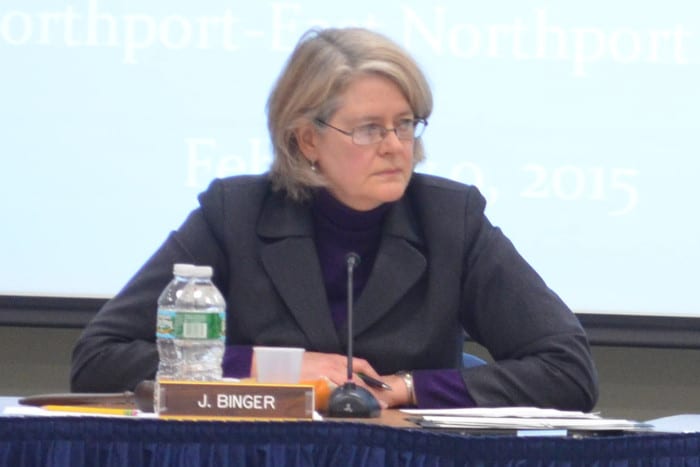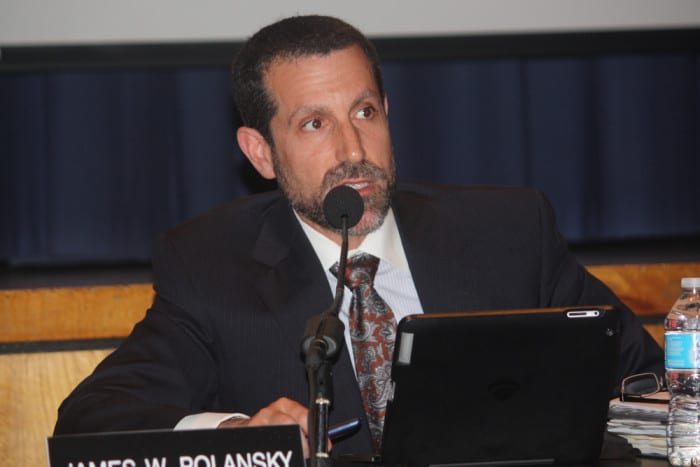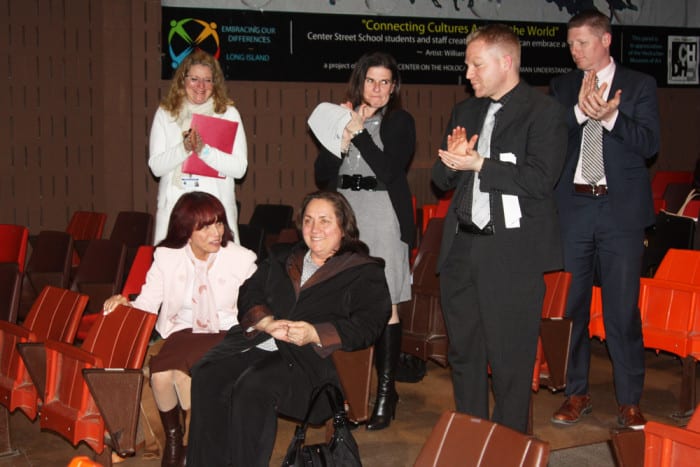Northport-East Northport school district residents could be asked to shell out $2.2 million more for next year’s school budget — an increase of 1.62 percent from this year’s property tax levy, interim schools superintendent Thomas Caramore said in a budget presentation on Monday.
That comes down to increasing the tax levy to a total of about $141 million next year, or about 88 percent of next year’s proposed nearly $160 million school budget. This year’s tax levy was about $138.6 million.
“Clearly, Northport [school district] budgets are supported by the taxpayers,” Caramore said.
The remainder would come from state aid, and right now school district officials are estimating 8 percent of the total budget to be supported by state aid, Caramore said, because they don’t yet know what the actual figure will be. He added that 2 percent of the budget will be funded from the district’s reserves and fund balance, and 2 percent miscellaneous income.
To keep the tax levy increase as low as possible next year the district proposes to use about $2.4 million of its assigned fund balance monies, Caramore said. The district applied about $2.8 million of its assigned fund balance to reduce the property tax levy for this year’s budget, he said.
The preliminary budget already includes $1.95 million in capital projects — replacing three boilers, exterior bleachers and the press box at the high school. On Monday, Caramore recommended the board consider approving three additional capital projects: paving the gravel parking lot at the high school, at a cost of $325,000; replacing two boilers at Norwood Avenue Elementary School, at a cost of $750,000; and replacing auditorium theatrical lighting at East Northport Middle School for $100,000. He recommended the projects be funded by the district’s capital reserves.
Assistant Superintendent for Business Kathleen Molander said at the meeting that the district has a total of about $1.2 million in capital reserves, in two capital funds.
Although some district residents spoke at the meeting to thank Caramore for his work on the budget, others questioned the district’s previously-announced plans to consolidate supervision of the high school’s music and visual arts departments. Under that proposal, Julia Lang-Shapiro, district chairperson for the visual arts, would be let go, and Izzet Mergen, director of music education, would supervise both programs. Caramore has said the move, a structure other school districts use, would not compromise the quality of the departments. At this week’s meeting, Caramore said Mergen is looking forward to the dual supervisory role.
Parents who want their children to opt out of state assessment testing need information on how to do that, district resident Kim Nertney told the board, and she asked why the school district doesn’t provide “informational forums” on the matter.
“Well, if we do that, then we’re in effect saying that we’re in favor of opting out, and we’re not doing that,” Caramore responded. He doesn’t want to emulate “renegade superintendents” in giving information on how to opt out, Caramore said, and won’t join those superintendents “in their civil disobedience.” The district will honor requests from individual parents who don’t want their kids to take the exams, Caramore said.
There will be a special school board meeting to finalize the budget on Wednesday, April 1, at 7 p.m. in the William J. Brosnan building.















